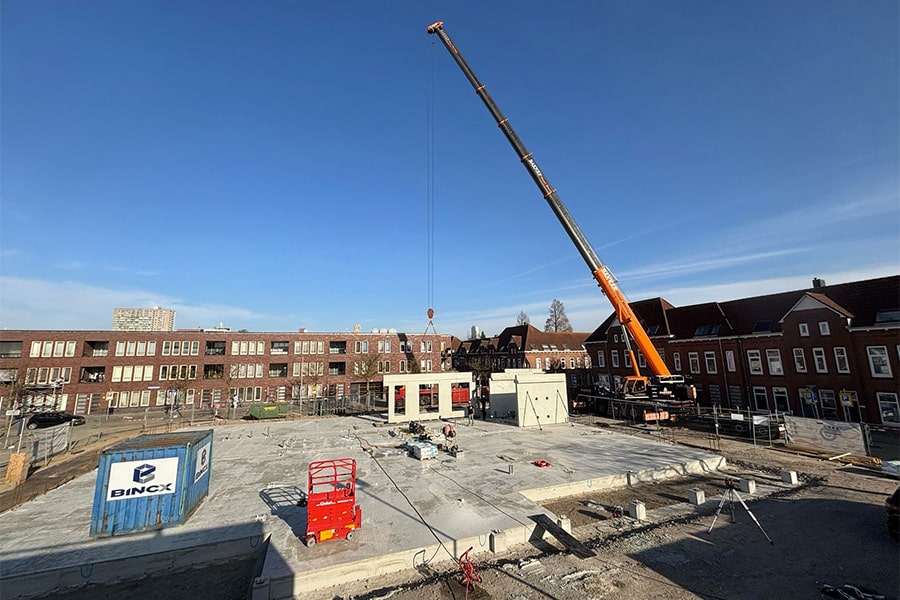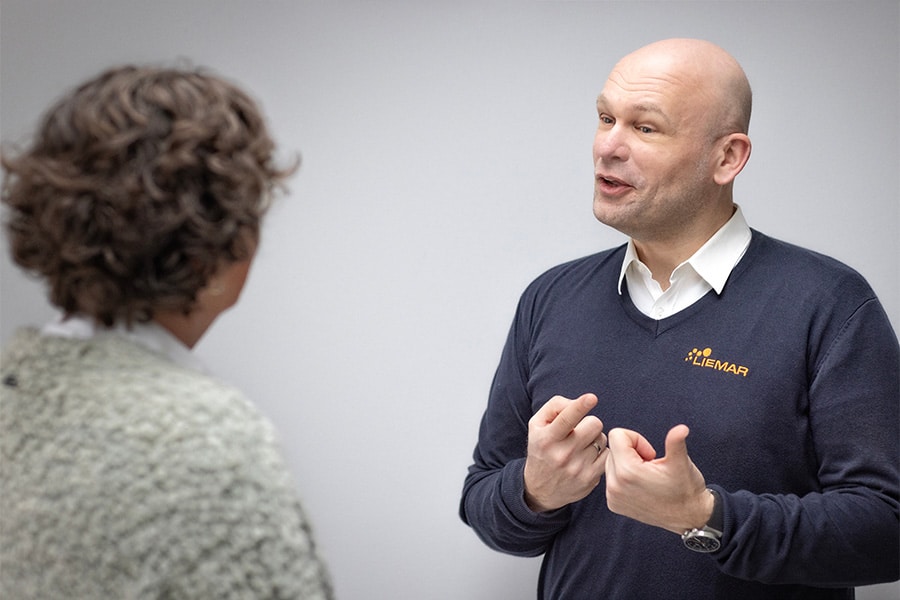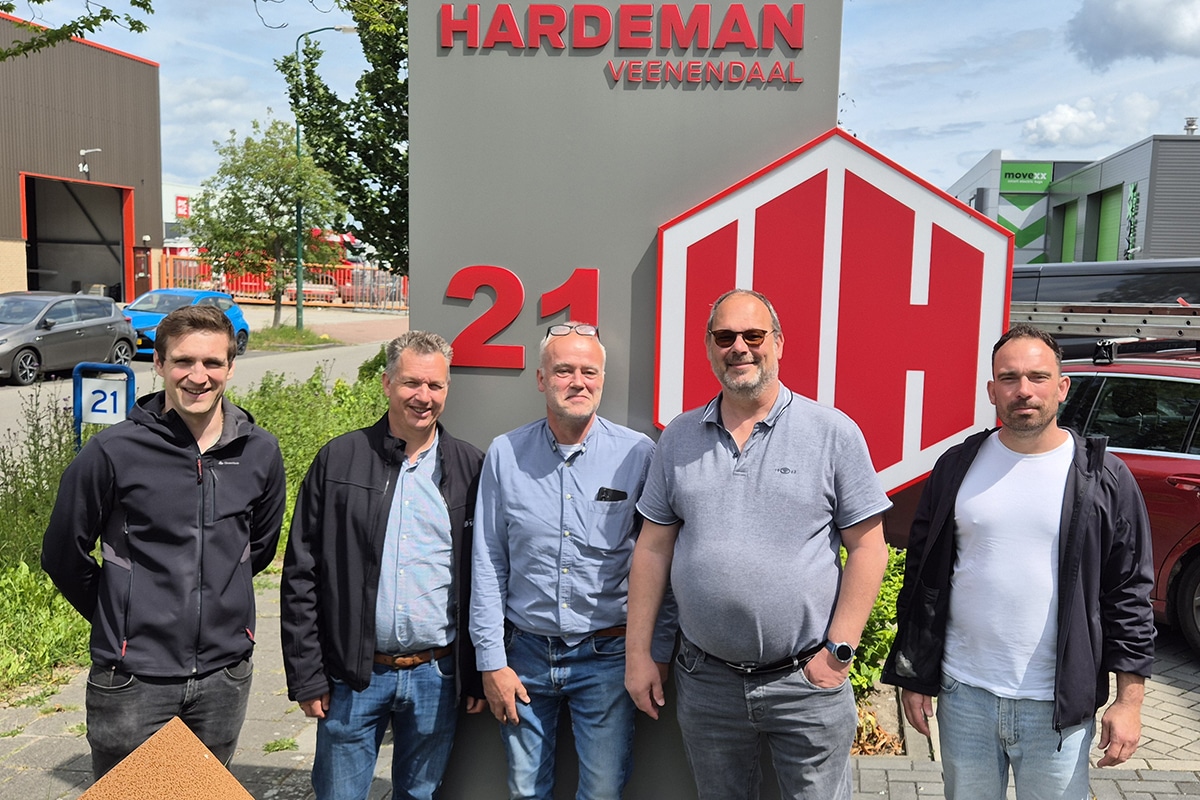
Circular wood-concrete bridge in use
The first innovative wood-concrete bridge designed by ipv Delft creative engineers and Knipscheer Infrastructuur has been inaugurated in Zwolle's Hessenpoort business park. For both parties, the moment to further explain the jointly developed standard circular bridge. Of particular note is the innovative combination of wood and concrete.

The bridge structure of the circular wood-concrete bridge consists of wooden girders topped by a thin, cast-in-place concrete deck. Constructively, both materials work together, allowing the deck to be relatively slender and limiting the use of materials. The design also combines the advantages of concrete (low maintenance, long life) with those of wood (sustainable).
Reuse
Knipscheer Infrastructure and ipv Delft developed the wood-concrete bridge based on the idea of designing a sustainable and, where possible, circular bridge. This is evident from the choice of materials, among other things. For example, the girders of the bridge in Zwolle are made of European Larch wood, a particularly sustainable type of wood, and the concrete of the abutments for 30% consists of recycled material. The simple fencing is stainless steel, which requires no coating or maintenance, and has a wooden handrail made of preserved Accoya. The horizontal fencing infill is made with standard stainless steel tube profiles. Not only convenient when one of the elements needs to be replaced, but also suitable for reuse. The steel tubular piles of the foundation (support point and abutments) can also be reused later.



Finish
The detailing and finishing is also fully geared to durability. By sweeping the concrete deck just after pouring, a sufficiently rough surface is created and no wear layer is needed. The wooden beams are laid in such a way that the wood can breathe sufficiently, and because the concrete deck protrudes a bit from the wooden beams, they stay dry and last considerably longer.
Because sustainability is about dealing sensibly with people and nature, animals were also considered in the realization of the fifteen-meter-long bicycle bridge on Steinfurtstraat in Zwolle. On both banks there is a modest fauna passage under the bridge consisting of semi-paved surfaces. The new bicycle bridge connects to a new bicycle path, which has been designed in a demountable and circular way and, for 80%, consists of recycled materials.
Fruitful collaboration
Ipv Delft and Knipscheer regularly work together. For example, they previously realized several bridges in Almere, including the new Michaux Bridge and the energy-neutral 2e Treasure Island Bridge.
Learn more:
Ronald Rozemeijer, ipv Delft, 015 750 25 71 or www.ipvdelft.nl
Steven Jansen, Knipscheer Infrastructure, 06 53 42 99 97 or www.knipscheer.com



